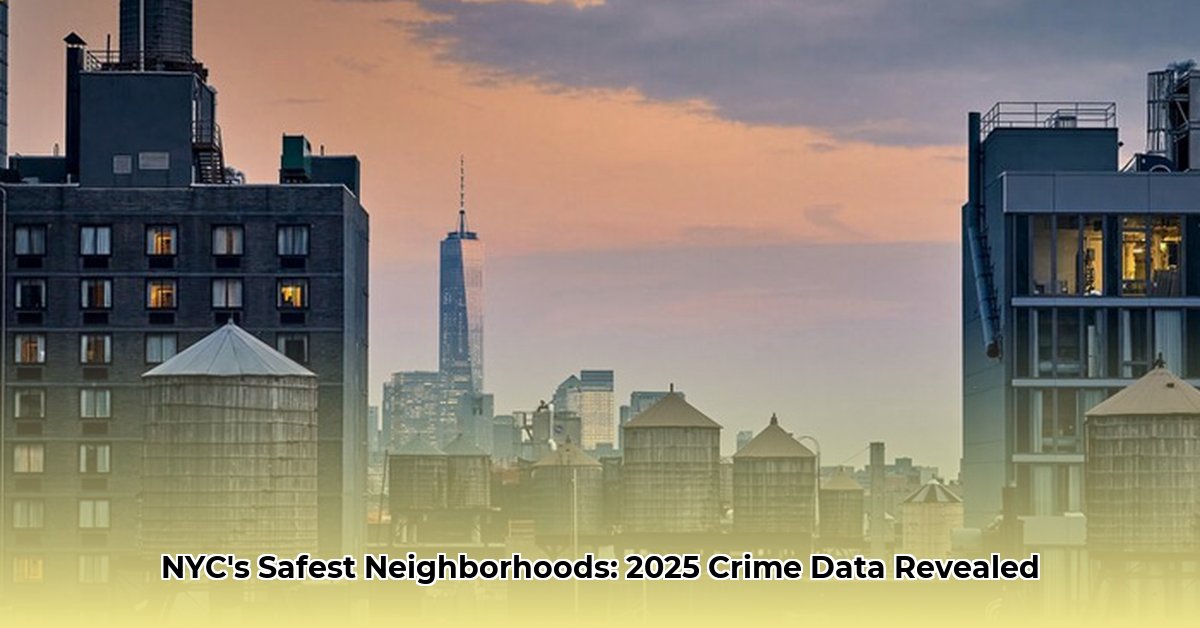
NYC Neighborhood Safety Rankings 2025: A Data-Driven Guide
Finding a safe place to live or visit in New York City can feel daunting. Different websites present conflicting safety rankings, leaving you confused. This article clarifies the situation by analyzing 2025 crime data from reputable sources, highlighting areas of agreement and disagreement, and providing practical advice. Whether you're a resident, visitor, or simply curious, we'll help you navigate the data and make informed decisions about your safety. For a different perspective, check out NYC's most dangerous areas.
Decoding the Data: Understanding the Differences Between Sources
Several organizations provide NYC neighborhood safety data, each employing different methodologies. For instance, Reolink and CrimeGrade offer distinct approaches. Reolink often presents a simplified ranked list, focusing primarily on raw crime numbers. CrimeGrade, however, uses a more complex system, incorporating factors beyond simple incident counts such as crime severity and population density to generate a relative safety score. These methodological differences lead to variations in rankings. Understanding these differences is crucial for interpreting the data accurately.
"It's not just about how many crimes occurred, but also the types of crimes and the context in which they happened," explains Dr. Anya Sharma, Criminologist at New York University. "CrimeGrade's approach attempts to account for this nuance, while Reolink's data might offer a less detailed picture."
Comparing Data Sources: Identifying Areas of Agreement and Disagreement
While Reolink and CrimeGrade may not always agree on the precise ranking of each neighborhood, they generally concur that crime rates vary significantly across NYC. Both sources, for instance, consistently identify areas like Battery Park City as safer compared to others. However, discrepancies emerge when comparing specific neighborhood rankings. This underscores the need to consult multiple sources and consider the limitations of each methodology.
Illustrative Comparison (Note: Data below is simplified for illustrative purposes only. Actual data is far more nuanced.):
| Neighborhood | Reolink Violent Crime (per 1000) | Reolink Property Crime (per 1000) | CrimeGrade Relative Safety (Illustrative) |
|---|---|---|---|
| Battery Park City | 1.7 | 16.7 | High |
| Tribeca | 6.6 | 57.8 | Moderate |
| Stuyvesant Town | 2.2 | 43.1 | Moderate - High (Illustrative) |
Navigating NYC Safety Data: A Step-by-Step Guide
How can you use this information to choose a safe neighborhood? Follow these steps:
- Consult Multiple Sources: Don't rely on a single source. Compare data from Reolink, CrimeGrade, and the NYPD's CompStat reports for a holistic understanding.
- Consider Context: Account for factors like population density, tourist traffic, and proximity to high-crime areas when interpreting crime rates.
- Go Beyond Statistics: Neighborhood characteristics like street lighting, community initiatives, and public transportation access play a significant role in perceived safety.
- Explore the Neighborhood: Visit potential neighborhoods to assess the environment firsthand. Observe factors like pedestrian traffic and street conditions.
- Analyze Trends: Review crime data over several years to identify long-term patterns and recent spikes or decreases.
Staying Safe in NYC: Practical Tips for Residents and Visitors
Regardless of neighborhood crime statistics, individual safety practices remain paramount. Always be aware of your surroundings, avoid poorly lit areas at night, use ride-sharing services, and utilize your phone's safety features.
"Being aware of your surroundings is critical," says Officer Daniel Rodriguez, NYPD Community Affairs Officer. "Trust your instincts, and if something feels wrong, remove yourself from the situation."
How to Effectively Compare Reolink and CrimeGrade Data
Key Differences: Reolink primarily uses raw crime statistics, offering simple rankings. CrimeGrade employs a weighted system considering severity, population density, and other contextual factors. This leads to different rankings and perspectives. To effectively compare both, consider the following:
- Acknowledge Methodological Differences: Recognize that CrimeGrade's weighted scoring system provides a more nuanced assessment than Reolink's simpler approach.
- Look Beyond Rate Per 1000: Consider the absolute number of crimes in conjunction with the rate. A higher rate in a smaller neighborhood might seem more dangerous than a lower rate in a much larger one.
- Contextualize Data: Account for the neighborhood’s features (lighting, community programs) and potential for tourist-related crime.
- Utilize Multiple Sources: Don't rely exclusively on Reolink and CrimeGrade. Integrate data from other sources (NYPD CompStat) for a more comprehensive picture.
Ultimately, your decision about neighborhood safety hinges on a careful consideration of multiple data sources and a realistic assessment of your personal risk tolerance. Remember, this is an ongoing analysis, and future updates may change our understanding of neighborhood safety levels.